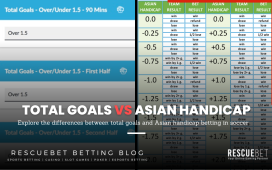As the name implies, a flat wager is a consistent wagering or staking strategy where a punter places a fixed chance after each bet. A fixed wager is limited to a fraction of a punter’s bankroll when a punter makes their first wager. For example, a punter with a bankroll of $1000 sets a 1% flat betting method for all blackjack games. With a 1% flat wager, a punter places no more than $10 in any single bet. If a punter loses, they lose $10, and if they win, they win $20. If a punter is lucky to win on a hand of blackjack, then the punter can expect to win $25 on a $10 wager. With a 1% flat margin, a punter would need to lose 100 consecutive wagers to deplete their betting bankroll completely. While losses are limited to 1%, profits are capped to 1% and 1.5% of the punter’s bankroll at the start. Some strategies include a punter either increasing or decreasing a wager after a win or loss. A flat betting method is an opposite because a punter utilizes a predetermined and fixed wagering structure. The advantages of using a fixed wagering structure include predictability, a specified level of risk, being easy to calculate, being suited for novice punters, and an improved profit level.
Flat Betting Method
Some of the advantages and features of the flat betting method include selecting the proper fraction, utilizing even odds, compatibility on games with even odds, and cumulative properties.
1. Streaks
One of the disadvantages of a flat betting system is that it fails to capitalize on streaks. Punters should avoid a static method on games capable of producing bars because a punter cannot make the most of continuous wins by increasing their stake. Conversely, a punter utilizing a fixed betting method on a losing streak can limit severe to marginal losses. Consider a punter that’s already up after winning quite a few hands of 21. A punter cannot increase their wager with a flat or fixed betting system even after making a considerable profit. As a punter wins more, their propensity for risk increases with a demand for a higher return.
2. Setting a Flat Fraction
Punters must establish and select a flat fraction or proportion which dictates how much a punter wagers on each hand. Choose this fraction based on a punter’s acceptable level of risk, which varies from punter to punter. For example, punters willing to risk a higher amount can select a flat fraction of 5%, which increases a punter’s profit and the risk of loss. With a 5% flat rate, a punter can lose their funds after 20 consecutive losses. A punter willing to undertake low levels of risk should consider selecting a flat fraction under 1%. A punter would need to lose over 100 hands consecutively to run out of their bankroll. The upside on a flat rate is also limited to the selected speed. While choosing a rate may seem easy, a punter must consider when to use a flat rate, its duration, and when to stop using the strategy.
3. Even Odds
A flat fraction wager works better on even odds or outcomes with an equal probability of occurring. Consider making a wager on a game with odds of 1/10, or 0.1%. If the punter wins the bet, they take a significant profit over and above, making an even-odd wager. If the punter loses, the loss is still limited to the chance made. However, the probability of winning such a wager is low, and a punter is likely to lose several similar bets. A wager on even odds limits a punter’s profit but caps the maximum level of risk a punter is exposed to and enables a punter to have a higher win rate. A higher win rate helps a punter make more profits through volume using a flat betting or staking strategy.
4. Cumulative Properties
Most betting systems or wagering systems have cumulative properties, i.e., strategies that require a punter to increase or decrease their stake after a win or loss. An increasing or decreasing stake can magnify potential losses or profits because of the cumulative nature of the system. A punter also needs to consider how the previous wager will affect the next bet.
























